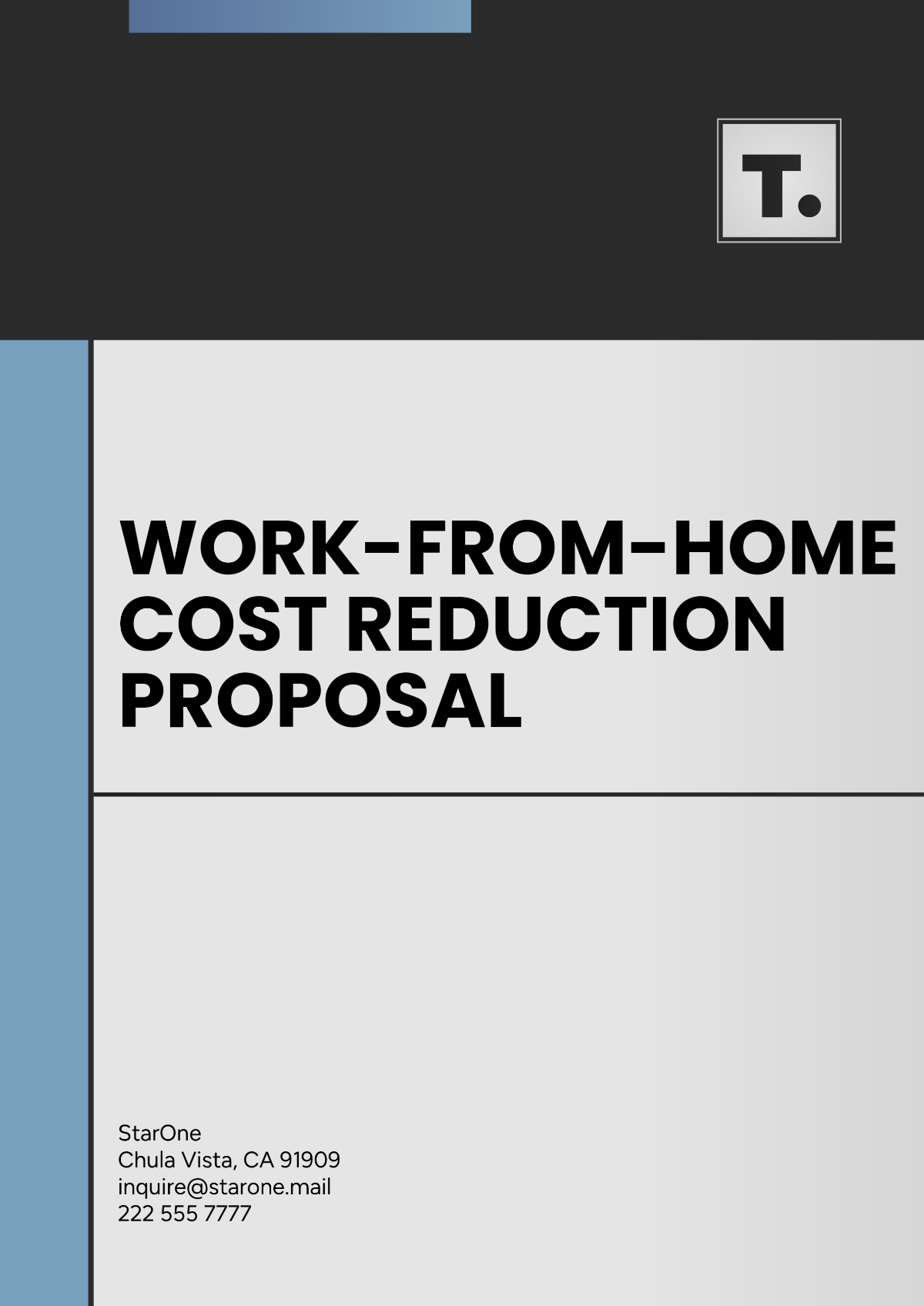Work-from-Home Cost Reduction Proposal
Prepared by: [Your Name]
Date: June 15, 2060
1. Executive Summary
This proposal outlines opportunities for reducing costs associated with the work-from-home model currently implemented within [Your Company Name]. The goal is to identify and implement strategies that can lead to significant savings in areas such as office space, utilities, commuting, technology, and other operational expenses. By optimizing the remote work framework, we aim to achieve a 25% reduction in operational costs within the next fiscal year.
2. Current Work-from-Home Setup Overview
Current Number of Remote Employees: 1,250
Current Work-from-Home Duration/Policy: Hybrid model (3 days remote, 2 days in-office)
Primary Tools and Platforms Used: Slack, Zoom, Microsoft Teams, Jira, Google Workspace
Current Costs:
Office Space Maintenance: $900,000 annually
Utility Expenses: $100,000 annually
Technology Support (Hardware/Software): $250,000 annually
Commuting Costs: $300,000 annually
Other Operational Costs: $150,000 annually
3. Cost Reduction Opportunities
A. Office Space Savings
Proposal: Reduce the office space requirement by scaling down leased office space and converting to a flexible hybrid office model. Specifically, reduce the leased office space in the New Haven headquarters by 50%, moving to smaller collaborative spaces with an emphasis on co-working areas.
Expected Savings: $450,000 annually.
Implementation Plan:
July 1, 2060: Conduct a survey to assess the number of employees that will require in-office presence on a regular basis.
August 1, 2060: Negotiate a 50% reduction in the office lease with Cosmos Real Estate.
September 1, 2060: Implement changes and shift unused spaces into meeting or collaboration areas, reducing physical office costs.
B. Utilities and Overhead Costs
Proposal: Decrease utility usage and reduce office-related overhead costs (electricity, water, maintenance) by minimizing the need for office presence and increasing energy-efficient practices in the office.
Expected Savings: $75,000 annually.
Implementation Plan:
June 20, 2060: Announce full remote work policy for non-essential employees, reducing office energy usage.
July 15, 2060: Implement automatic shutoff systems for non-essential lighting, HVAC, and equipment when the office is unoccupied.
August 1, 2060: Evaluate water and waste management to further cut down on costs.
C. Technology and Equipment Optimization
Proposal: Streamline technology expenditures by consolidating software licenses and eliminating redundant hardware or software subscriptions.
Expected Savings: $100,000 annually.
Implementation Plan:
July 10, 2060: Review all active software licenses and subscriptions with IT and operations teams.
August 5, 2060: Consolidate software platforms where possible and negotiate bulk pricing or discounts with vendors like Zenith Software Solutions and TechWave Systems.
September 1, 2060: Distribute more standardized, cost-effective hardware to remote workers, cutting down on expensive, custom setups.
D. Commuting Costs Reduction
Proposal: Further reduce the need for commuting by transitioning more employees to full remote work and cutting down on transportation stipends.
Expected Savings: $150,000 annually.
Implementation Plan:
June 30, 2060: Reassess the commuting policies and eliminate transportation stipends for employees who can work remotely full-time.
July 15, 2060: Offer incentives for employees who choose to work from home more frequently, such as additional remote stipends for home office setup.
E. Other Operational Costs
Proposal: Streamline miscellaneous operational expenses, including office supplies and in-person meetings, by transitioning more interactions to virtual formats.
Expected Savings: $50,000 annually.
Implementation Plan:
June 25, 2060: Encourage the use of digital collaboration tools to reduce office supply usage (e.g., printing, paper).
July 1, 2060: Transition client meetings to virtual formats, reducing the need for travel and related expenses.
4. Summary of Expected Savings
Cost Category | Expected Savings (Annual) |
|---|---|
Office Space Maintenance | $450,000 |
Utility Expenses | $75,000 |
Technology and Equipment | $100,000 |
Commuting Costs | $150,000 |
Other Operational Costs | $50,000 |
Total Expected Savings | $825,000 |
5. Conclusion and Next Steps
By implementing these proposed changes, [Your Company Name] can significantly reduce operational expenses while maintaining an effective and productive remote work environment. The next steps include finalizing the office lease negotiations, communicating changes to employees, and rolling out the necessary technological upgrades to support long-term remote work success.
Next Steps:
June 20, 2060: Begin employee communications regarding new policies.
July 1, 2060: Implement office space reductions and utility savings initiatives.
August 1, 2060: Start technology and software optimizations.
By the end of Q3 2060, we anticipate fully realizing the proposed savings, with a continued reduction in overhead expenses throughout the remainder of the fiscal year.


























